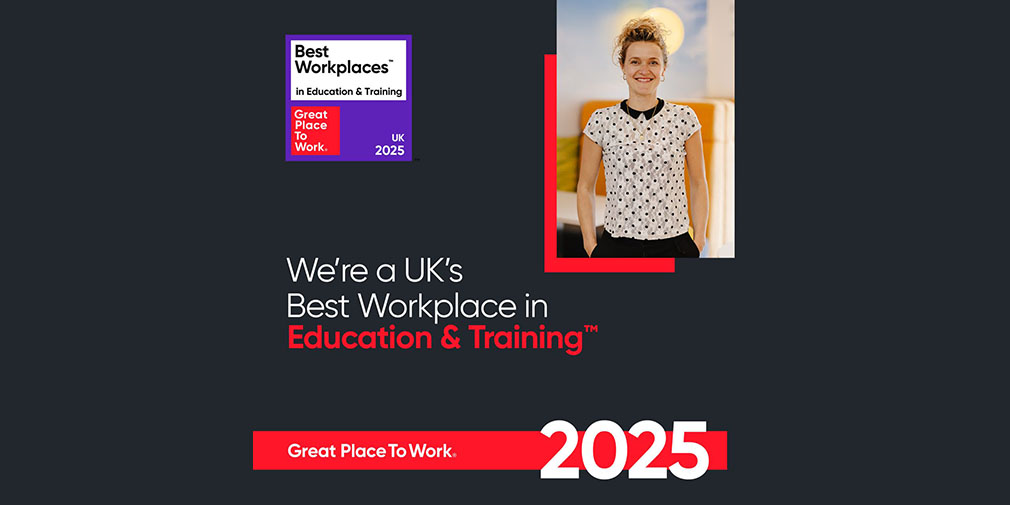Considering that it is something they do for the majority of their life, people don’t enjoy their work as much as they should. You may have heard the phrase “quiet quitting,” which is when people do the bare minimum to maintain their jobs, or “loud quitting,” where they talk openly about how unhappy they are.
To put things into a numerical perspective as to how bad things really are, 62% of employees are disengaged, and another 17% are actively unhappy and vocal about it, according to Gallup statistics. We lose $8.8 trillion each year in global productivity because of unhappiness at work. That’s 9% of the world’s GDP gone.
But we don’t want to just talk about what is going wrong; we want to understand how happiness at work can be fixed in a way that benefits everyone. An Oxford research study found that happy workers are 13% more productive than unhappy employees. They tend to stay at the company longer, help their colleagues more, and bring better energy to the workplace. These employees have real reasons to care about what they are doing. McKinsey and the World Economic Forum estimate that improving employee health and well-being could unlock $11.7 trillion in global economic value.
An article from Harvard Business Review in 2023 by Jennifer Moss outlines 3 steps to optimize happiness in organisations.
1. Availability of flexibility
Post-pandemic, the corporate industry changed entirely. Many people got used to working from home, giving them more time, more control, and less stress. Now, some companies are trying to revert to full in-person working conditions. But people do not want to commute for hours just to sit at a desk they already have at home. They experienced managing work from home, and they know they can do it. When people talk about flexibility and freedom over how they work, they aren’t just referring to working remotely. They also want various start and end times or different projects that have meaning to the company.
A global survey by Cisco found that 82% of employees said working wherever they want to makes them happier. Gallup found that employees are most engaged when they work remotely 60% to 80% of the time. The ILO reported that flexibility, whether it is about location or hours, directly improves work-life balance and productivity. All these statistics found in a variety of studies back up our claim.
If we narrow it down even more, we can see that flexibility isn’t distributed equally. During the pandemic, women were more likely to work from home. Even now, 41% of women are remote, whereas only 28% of men are. This may seem like progress, but it actually can backfire. If in-person employees start getting the promotions and all the visibility, we could risk pushing women into lower-paid and lower-growth roles.
Adam Grant, a psychologist who studies working conditions, says that it is not just about where we work, but also about when, how much, and how. Being able to take a later or earlier lunch break or pick your own start time is what flexibility should include. Having this opportunity for both men and women equally would be the baseline for building a workplace where people can function and perform well.
2. Belongingness matters
Despite co-workers interacting with one another every day, only 3 in 10 employees say they have a best friend at work. This number matters because people with stronger social connections are more likely to recommend the company to others, stay with the organisation, and feel satisfied with their workplace.



Culture plays a big role in these results. Belonging isn’t felt from forced fun or team-building activities without context. It requires trust, inclusion, and recognition of all employees at an organisation. Thoughtful praise or gratitude alone can improve productivity. Even small interactions, such as checking in with someone about how they prefer to work, can build relational cadence.
When employees feel safe enough to be honest, make mistakes, and be human, engagement tends to rise. Oftentimes, employees need their leaders to model this behaviour (leaving on time, admitting fault, taking real vacation) for them to feel comfortable doing the same. An example of companies offering benefits to support this is Airbnb, which offers a $2,000 annual travel stipend for employees to stay at any of their listings. While these are great perks, they are more effective because employees don’t feel burdened or ashamed about using them. We want people to restore connection and prevent burnout.
3. Help people find a purpose
Not everyone finds purpose in their work, which is completely okay. But when all there is to working is to earn a living, support your family, or save for the future, people feel as though their time isn’t spent on something meaningful. This then leads to drops in motivation, which will inevitably affect performance. This link between purpose and performance has been studied for decades. Raj Sisodia’s research on conscious capitalism found that companies driven by values and not just profit saw returns of 1,646% over 15 years. In contrast, the S&P 500 averaged just 157% over the same period. However, Sisodia urges that purpose should not be used to boost profits and that companies need to commit to values because they believe it is the right thing to do.
There is also a strong connection between purpose and mental health. According to the U.S. Department of Health and Human Services, 76% of workers report experiencing at least one mental health symptom. 84% of respondents claim their workplace conditions contributed to at least one mental health challenge, and 81% said they would consider leaving their job for one that supports mental health better.
Hilton Hotel is one example of what this kind of culture looks like. When COVID-19 closed down most of their businesses, they didn’t just lay off their employees. They kept recruiters on staff to help employees find roles in other industries. They also donated one million hotel nights to healthcare workers who needed a place to quarantine. This displayed Hilton’s company values and how they treat their employees.
Final thought
All of this is easier said than done. It requires time, commitment, and money from companies. But if you want to achieve better performance, you need to be willing to invest in the conditions that make it possible. Simply asking your team, “What would make your week easier?” or “Do you feel like you’re growing here?” can make a significant change. It won’t be fixed overnight, but the more an organisation listens, the clearer the path becomes. Happiness at work is the foundation for everything else that matters in business.
Reference:
Gallup. (2025). State of the global workplace: 2025 report. Gallup, Inc. https://www.gallup.com/workplace/349484/state-of-the-global-workplace.aspx
Gallup. (2022, March 9). The increasing importance of a best friend at work. https://www.gallup.com/workplace/397058/increasing-importance-best-friend-work.aspx
McKinsey Health Institute. (2023, October). Thriving workplaces: How employers can improve
productivity and change lives. McKinsey & Company. https://www.mckinsey.com/mhi/our-insights/thriving-workplaces-how-employers-can-improve-productivity-and-change-lives
Moss, J. (2023, October 20). Creating a happier workplace is possible — and worth it. Harvard
Business Review. https://hbr.org/2023/10/creating-a-happier-workplace-is-possible-and-worth-it
U.S. Department of Health and Human Services, Office of the Surgeon General. (2022). The
U.S. Surgeon General’s framework for workplace mental health and well-being. https://www.hhs.gov/surgeongeneral/reports-and-publications/workplace-well-being/index.html





















